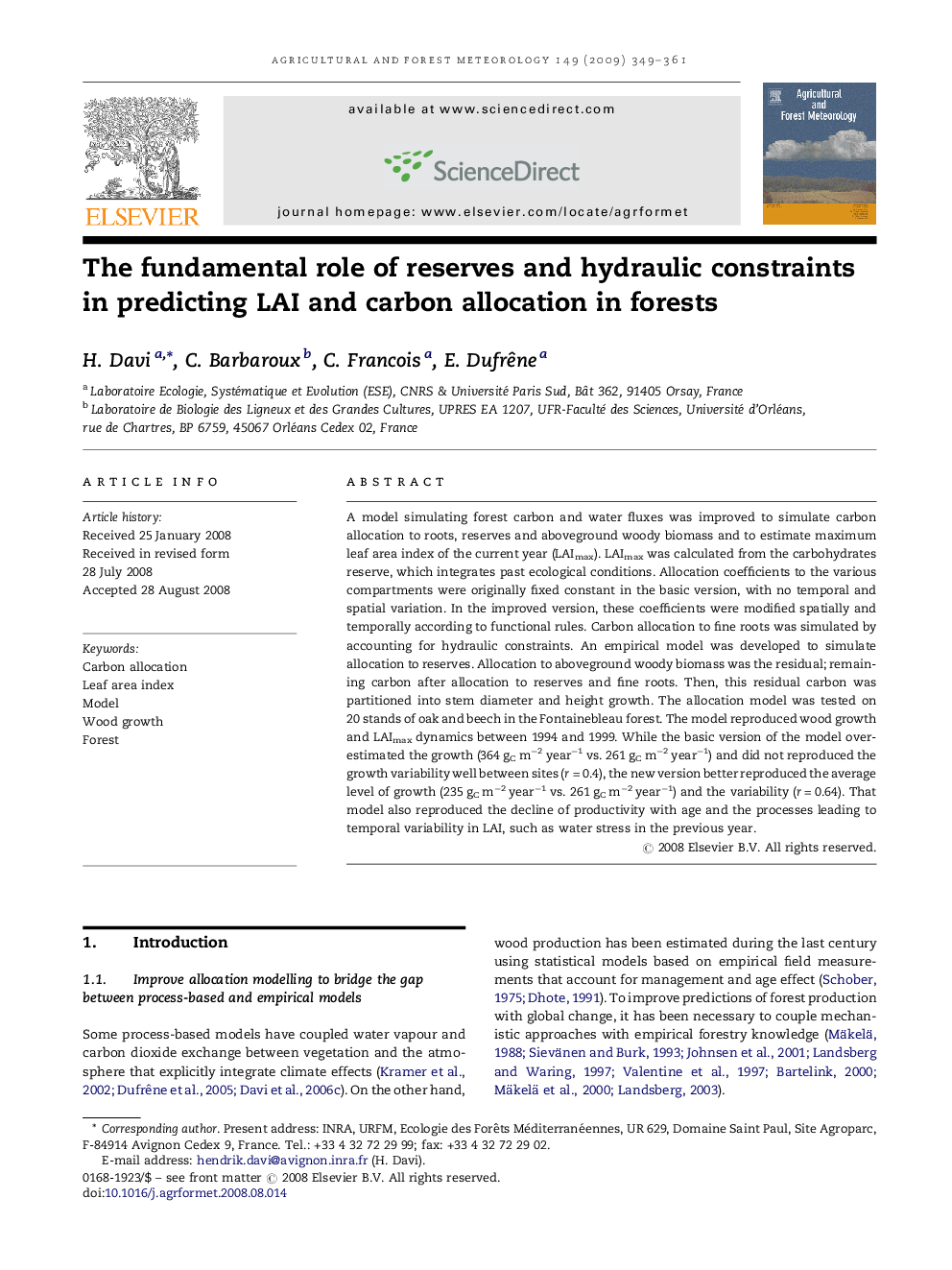| Article ID | Journal | Published Year | Pages | File Type |
|---|---|---|---|---|
| 82353 | Agricultural and Forest Meteorology | 2009 | 13 Pages |
A model simulating forest carbon and water fluxes was improved to simulate carbon allocation to roots, reserves and aboveground woody biomass and to estimate maximum leaf area index of the current year (LAImax). LAImax was calculated from the carbohydrates reserve, which integrates past ecological conditions. Allocation coefficients to the various compartments were originally fixed constant in the basic version, with no temporal and spatial variation. In the improved version, these coefficients were modified spatially and temporally according to functional rules. Carbon allocation to fine roots was simulated by accounting for hydraulic constraints. An empirical model was developed to simulate allocation to reserves. Allocation to aboveground woody biomass was the residual; remaining carbon after allocation to reserves and fine roots. Then, this residual carbon was partitioned into stem diameter and height growth. The allocation model was tested on 20 stands of oak and beech in the Fontainebleau forest. The model reproduced wood growth and LAImax dynamics between 1994 and 1999. While the basic version of the model overestimated the growth (364 gC m−2 year−1 vs. 261 gC m−2 year−1) and did not reproduced the growth variability well between sites (r = 0.4), the new version better reproduced the average level of growth (235 gC m−2 year−1 vs. 261 gC m−2 year−1) and the variability (r = 0.64). That model also reproduced the decline of productivity with age and the processes leading to temporal variability in LAI, such as water stress in the previous year.
